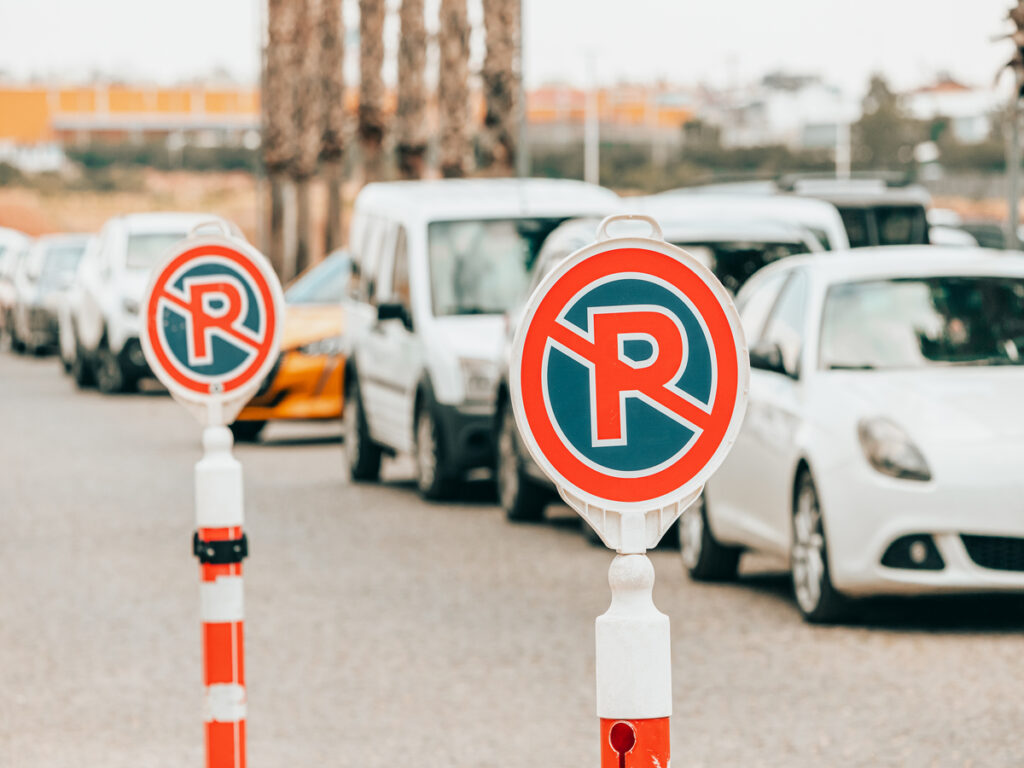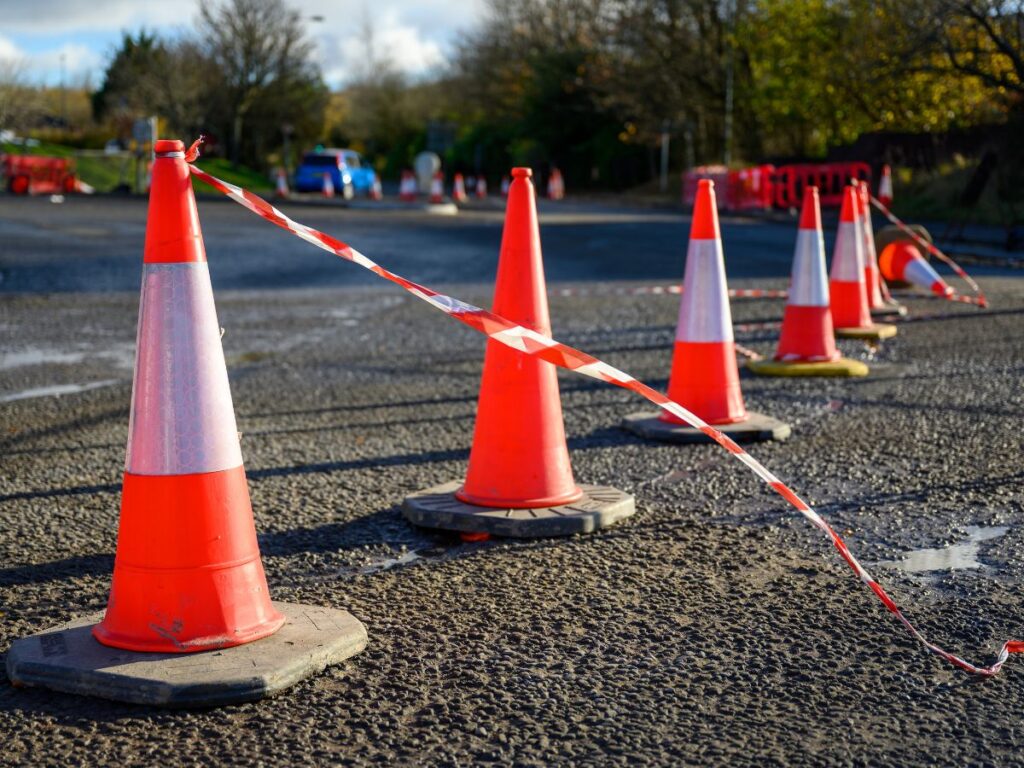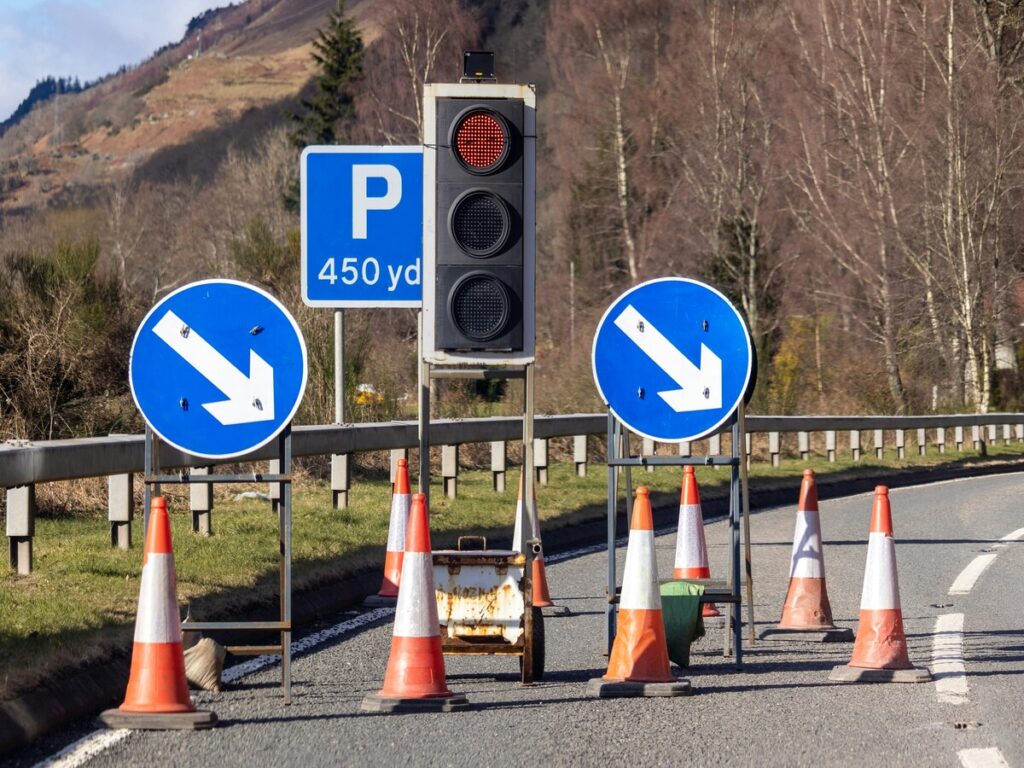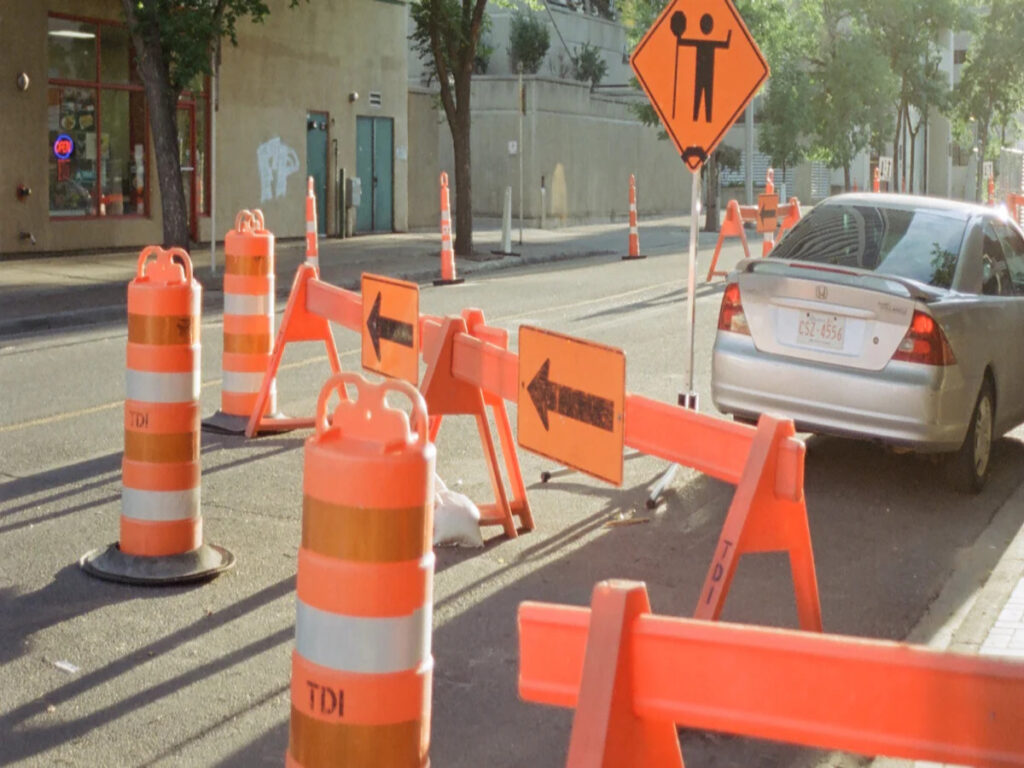
When it comes to road safety, having the right equipment is crucial. Among the most essential tools are traffic cones, with 28-inch traffic cones and 36-inch traffic cones being particularly important for maintaining highway safety. Their height and reflective collars make them highly visible to drivers, even at night, providing extra time to react and helping to reduce accidents in busy areas. The taller design of these cones also offers better wind resistance, ensuring they remain stable in open environments.
Key Features of 28-inch and 36-inch Traffic Cones
Height and Visibility
Visibility benefits of 28-inch traffic cones in urban and low-speed areas.
When you’re managing traffic in urban or low-speed areas, 28-inch traffic cones are a great choice. Their height makes them easy to spot from a distance, even in busy streets or construction zones. These street cones are designed with reflective collars that enhance visibility during nighttime or low-light conditions. Drivers can see them clearly, giving them enough time to adjust their speed or direction. This feature is especially useful for ensuring safety in areas with slower-moving vehicles.
Advantages of 36-inch traffic cones for high-speed highways.
On high-speed highways, 36-inch traffic cones are the go-to option. Their taller design makes them stand out, even when vehicles are moving at higher speeds. The extra height ensures they remain visible from farther away, which is crucial for alerting drivers to changes in traffic patterns. Reflective collars on these highway cones further improve visibility, especially under vehicle headlights at night. This combination of height and reflective properties makes them ideal for maintaining traffic safety on busy highways.
Reflective Properties
Importance of reflective collars for nighttime safety.
Reflective collars play a vital role in keeping roads safe at night. These bands catch and reflect light, making the traffic cones noticeable even in the darkest conditions. Whether it’s a construction zone or an emergency situation, reflective traffic cones ensure drivers can see and respond to changes in traffic flow. This feature significantly reduces the risk of accidents during nighttime operations.
Compliance with MUTCD standards for visibility.
To meet MUTCD standards, traffic cones must have retroreflective sheeting. For traffic cones between 28 and 36 inches, the top band should be 6 inches wide, placed 3 to 4 inches from the top. A second band, 4 inches wide, should sit 2 inches below the first. These specifications ensure maximum visibility, whether you’re working during the day or night. By using cones that meet these standards, you can ensure compliance and enhance safety.
Durability and Stability
Weather-resistant materials for long-term use.
Traffic cones face harsh conditions, from blazing sun to heavy rain. Materials like PVC and rubber are commonly used to make them durable. PVC is lightweight and resists weathering, while rubber is heavier and provides extra strength. These materials ensure the cones last longer, even in tough environments.
Stability features to withstand wind and heavy traffic.
Stability is key when you’re placing cones in high-traffic or windy areas. Taller cones, like the 28-inch and 36-inch options, offer better wind resistance. Rubber bases add weight, keeping the cones steady even when vehicles pass by at high speeds. This stability ensures the cones stay in place, maintaining safety and order on the road.
OPTsigns provides a variety of traffic cones with these features to meet your specific safety requirements, ensuring optimal performance even under challenging conditions.
Compliance with Safety Standards and Regulations
MUTCD Guidelines
Minimum height requirements for highway traffic cones.
When it comes to highway safety, the Manual on Uniform Traffic Control Devices (MUTCD) sets clear rules for traffic cones. For high-speed areas or nighttime use, traffic cones must be at least 28 inches tall. This ensures they’re visible to drivers from a distance, giving them enough time to react. On low-speed roads during the day, smaller cones, like 18-inch ones, may suffice. However, for highways, the 28-inch and 36-inch cones are essential for maintaining proper visibility and safety.
OPTsigns offers traffic cones that fully comply with MUTCD standards, ensuring that your traffic control solutions are both effective and regulatory-compliant.
Reflective collar specifications for nighttime operations.
Reflective collars are a must-have for traffic cones used at night. MUTCD guidelines require cones to have retroreflective sheeting to enhance visibility in low-light conditions. For 28-inch and 36-inch cones, the top band should be 6 inches wide, placed 3 to 4 inches from the top. A second band, 4 inches wide, should sit 2 inches below the first. These reflective features make the cones stand out under headlights, ensuring drivers can navigate safely through work zones.
OSHA Standards
Worker safety requirements in work zones.
You can’t overlook worker safety in work zones. OSHA emphasizes the need for proper warnings, signs, and visual signals, including traffic cones, to create a secure environment. Workers must also receive training to handle traffic control effectively. Using cones with reflective properties and maintaining proper spacing ensures everyone stays safe. A well-planned temporary traffic control (TTC) zone not only protects workers but also keeps traffic flowing smoothly.
Proper cone placement for compliance and safety.
Placing traffic cones correctly is just as important as using the right ones. OSHA and MUTCD recommend spacing cones based on traffic speed and road type. For example, on highways, cones should be spaced between 10 and 50 feet apart. Proper placement helps guide vehicles safely and prevents confusion. It also ensures workers know their boundaries, reducing the risk of accidents in the work zone.
Practical Applications of 28-inch and 36-inch Traffic Cones
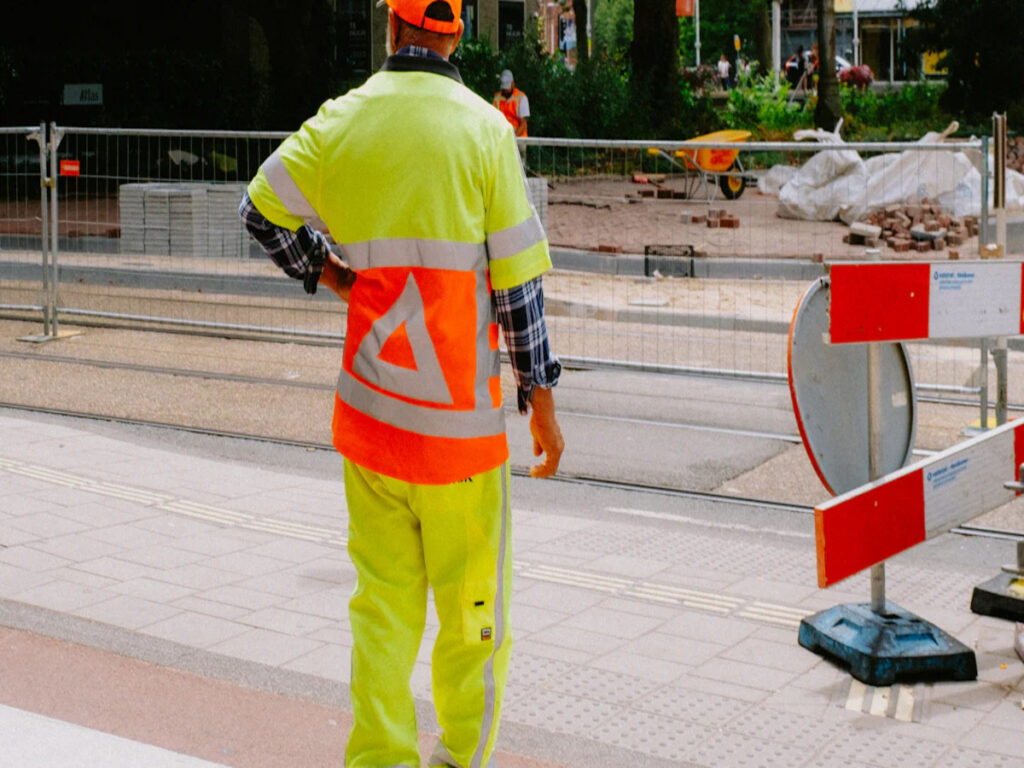
Construction Zones
Delineating work areas to protect workers and equipment.
In construction zones, traffic cones are essential for keeping workers and equipment safe. You can use them to clearly mark work areas and define boundaries, ensuring drivers know where to avoid. The 28-inch traffic cones are perfect for smaller projects or urban settings where vehicle speeds are lower. Their reflective collars enhance visibility, especially at night, making them a reliable choice for delineating work zones. On the other hand, 36-inch cones are better suited for highway construction or large-scale projects. Their taller height and increased visibility make them ideal for high-speed areas, where quick driver reactions are critical. These cones also serve as mounting points for temporary signage, providing additional information to drivers.
Managing traffic flow around construction sites.
Managing traffic flow is another critical task in construction zones. Traffic cones help you direct vehicles into appropriate lanes, signal detours, and indicate reduced speed zones. This minimizes the risk of accidents and keeps traffic moving smoothly. For example, you can use 28-inch cones to guide vehicles through temporary work zones in urban areas. Meanwhile, 36-inch cones are better for highways, where their size ensures they remain visible even from a distance. Proper placement of cones creates clear paths for drivers, reducing confusion and congestion around construction sites.
Maintenance and Utility Work
Marking temporary hazards like potholes or repairs.
Temporary hazards like potholes or roadside repairs can pose serious risks to drivers. Traffic cones provide a simple yet effective way to alert drivers and pedestrians to these dangers. Their reflective properties make them highly visible, even in low-light conditions. You can use them to mark temporary work zones or changes in road conditions, such as debris or uneven surfaces. The 28-inch cones are lightweight and easy to deploy, making them ideal for quick setups. For larger or more hazardous areas, 36-inch cones offer better visibility and stability, ensuring safety for everyone on the road.
Ensuring worker safety during roadside maintenance.
Worker safety is a top priority during roadside maintenance. Traffic cones help you create a secure environment by delineating work zones and guiding vehicles away from workers. Proper spacing and placement of cones provide drivers with enough warning to adjust their speed and direction. The 28-inch cones work well for smaller maintenance tasks, while 36-inch cones are better for high-speed or high-traffic areas. Their durability and reflective features ensure they remain effective, even in challenging conditions.
Emergency Situations
Creating safe zones for accident response teams.
During emergencies, traffic cones play a vital role in creating safe zones for accident response teams. You can quickly deploy them to establish perimeters around accident sites, keeping first responders and drivers safe. Their lightweight design allows for rapid setup, while their reflective collars ensure visibility in all conditions. Emergency vehicles often carry at least 16 cones to manage traffic effectively during incidents. The 36-inch cones are particularly useful in these situations, as their height and stability make them stand out on busy highways.
Directing traffic during road closures or detours.
Road closures and detours can be chaotic without proper traffic control. Traffic cones help you manage these situations by marking clear detour routes and channeling vehicles safely. You can combine cones with advance warning signs to prepare drivers for changes ahead. For smooth transitions, use tapered configurations as recommended by the MUTCD. The 28-inch cones are suitable for urban detours, while 36-inch cones are better for highways, where visibility and stability are crucial. By using cones strategically, you can prevent sudden stops or sharp turns, ensuring a safer and more organized flow of traffic.
Benefits of Using 28-inch and 36-inch Traffic Cones
Enhanced Safety
Preventing accidents by improving visibility and guiding traffic.
You can’t underestimate the role of traffic cones in preventing accidents. Their bright orange color and reflective collars make them highly visible, even in low-light conditions. Taller cones, like the 28-inch and 36-inch options, stand out on highways and busy roads. Drivers can spot them from a distance, giving them enough time to adjust their speed or direction. This is especially important in high-risk areas where quick reactions are crucial. These cones also guide traffic effectively, helping vehicles navigate safely through work zones or around hazards.
- Cones over 28 inches are ideal for high-speed roads due to their visibility from afar.
- Reflective collars enhance nighttime visibility, reducing accident risks.
- Proper height ensures effective traffic guidance, minimizing collisions.
Protecting workers and drivers in high-risk areas.
In high-risk zones, like construction sites or emergency areas, these cones create a protective barrier. Their stability, thanks to weighted bases, keeps them upright even in windy conditions or heavy traffic. This ensures they stay in place, safeguarding workers and pedestrians. The 36-inch cones are particularly effective on highways, where their height and durability provide an added layer of safety.
Improved Traffic Flow
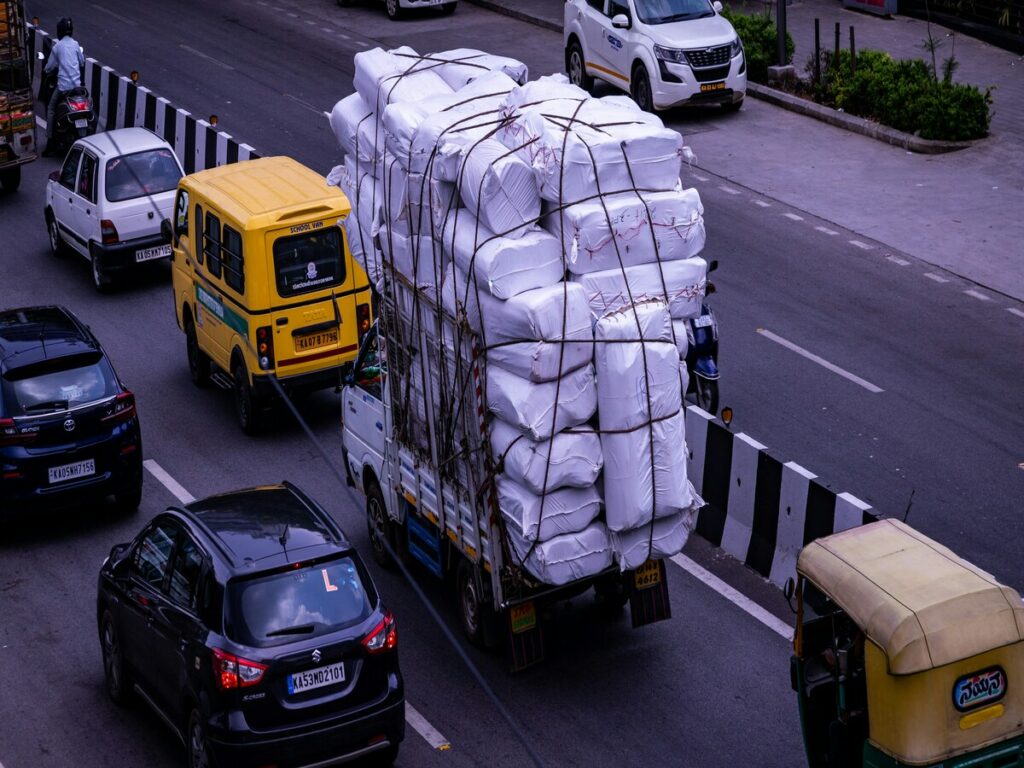
Reducing congestion in construction and maintenance zones.
Traffic cones are essential for keeping traffic moving smoothly in work zones. They channel vehicles into designated lanes, preventing confusion and bottlenecks. Specific patterns, like tapering, signal drivers to merge early, reducing the chances of sudden stops or accidents. For example:
- Cones create clear lanes and merge points in construction zones.
- Tapered arrangements guide drivers into single lanes, avoiding jams.
- Serpentine setups help vehicles navigate narrow sections safely.
By marking work areas and hazards, cones improve traffic flow and reduce congestion, ensuring a safer driving experience for everyone.
Ensuring smooth detours during emergencies.
During emergencies, cones play a critical role in directing traffic. You can use them to mark detour routes or close off unsafe areas. Their reflective properties ensure drivers notice them, even at night. The 36-inch cones are especially useful for creating visible and stable barriers on highways, while the 28-inch cones work well in urban settings.
Versatility
Suitable for various road types and traffic conditions.
Both 28-inch and 36-inch traffic cones are designed to handle different scenarios. The 28-inch cones are perfect for roads where speeds exceed 45 mph, making them ideal for urban construction or maintenance projects. On the other hand, the 36-inch cones excel in high-speed zones, offering maximum visibility and stability. Whether you’re managing traffic on a busy highway or a quiet street, these cones adapt to the situation.
- 28-inch cones are great for roadways with moderate speeds.
- 36-inch cones provide optimal visibility in fast-moving traffic.
Easy to transport and deploy in different scenarios.
You’ll appreciate how easy it is to transport and set up these road cones. Their lightweight design makes them portable, while their durable materials ensure they can withstand impacts and harsh weather. Some road cones even feature collapsible designs, making them perfect for emergency use or storage in tight spaces. Whether you’re dealing with a sudden hazard or a planned work zone, these road cones are ready to go.
| Feature | Description |
|---|---|
| Material and Design | Made from durable materials like PVC or rubber, ensuring resistance to weather and impacts. |
| Stability | Conical shape with a square base prevents tipping, enhancing safety during use. |
| Visibility | Bright orange color with reflective strips improves visibility day and night. |
| Portability | Lightweight nature allows for easy transportation and quick deployment in various scenarios. |
| Collapsible Design | Collapsible cones can be folded for compact storage, ideal for vehicles or limited spaces. |
| Emergency Use | Quickly deployable in emergencies to direct traffic or mark hazards, enhancing safety. |
When it comes to highway safety, 28-inch and 36-inch traffic cones are indispensable tools. Their bright orange color and reflective bands make them highly visible, reducing accident risks and ensuring smooth traffic flow. Whether you’re managing a construction zone or responding to an emergency, these cones help guide vehicles and protect workers effectively. Studies show that proper placement and reflective materials are critical for commanding attention and giving drivers enough time to react.
Investing in high-quality cones offers long-term benefits. Durable materials reduce replacement costs, while reliable stability and visibility enhance safety. By choosing the right cones for your needs, you can create safer roads and save money over time. So, whether you’re working in urban areas or high-speed highways, these cones are a smart choice for maintaining order and safety.
FAQ
What’s the main difference between 28-inch and 36-inch traffic cones?
The key difference lies in their height and visibility. The 28-inch cones work best for urban or low-speed areas, while the 36-inch cones are ideal for high-speed highways. Taller cones provide better visibility and stability, especially in windy conditions or heavy traffic.
Can I use 28-inch cones on highways?
You can, but only if the speed limit is below 45 mph. For higher speeds, 36-inch cones are required to meet safety standards. Their extra height ensures drivers notice them from a greater distance, reducing accident risks.
Are 36-inch cones harder to transport?
Not really! While they’re taller and heavier, most 36-inch cones are designed for easy stacking and portability. You can transport them in bulk without much hassle. Their durability also means fewer replacements, saving you time and effort in the long run.
Do both cone sizes meet MUTCD standards?
Yes, both sizes comply with MUTCD guidelines when equipped with reflective collars. The 28-inch cones are suitable for lower-speed zones, while the 36-inch cones meet the requirements for high-speed highways. Always check for proper reflective bands to ensure compliance.
Which cone size is more cost-effective?
It depends on your needs. The 28-inch cones are cheaper upfront and work well for urban projects. However, 36-inch cones last longer in high-speed or high-traffic areas due to their durability and stability. Investing in the right size saves money and enhances safety.

